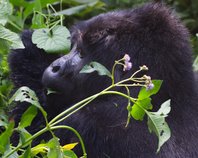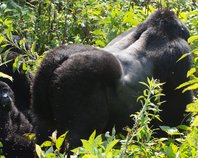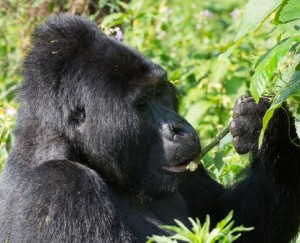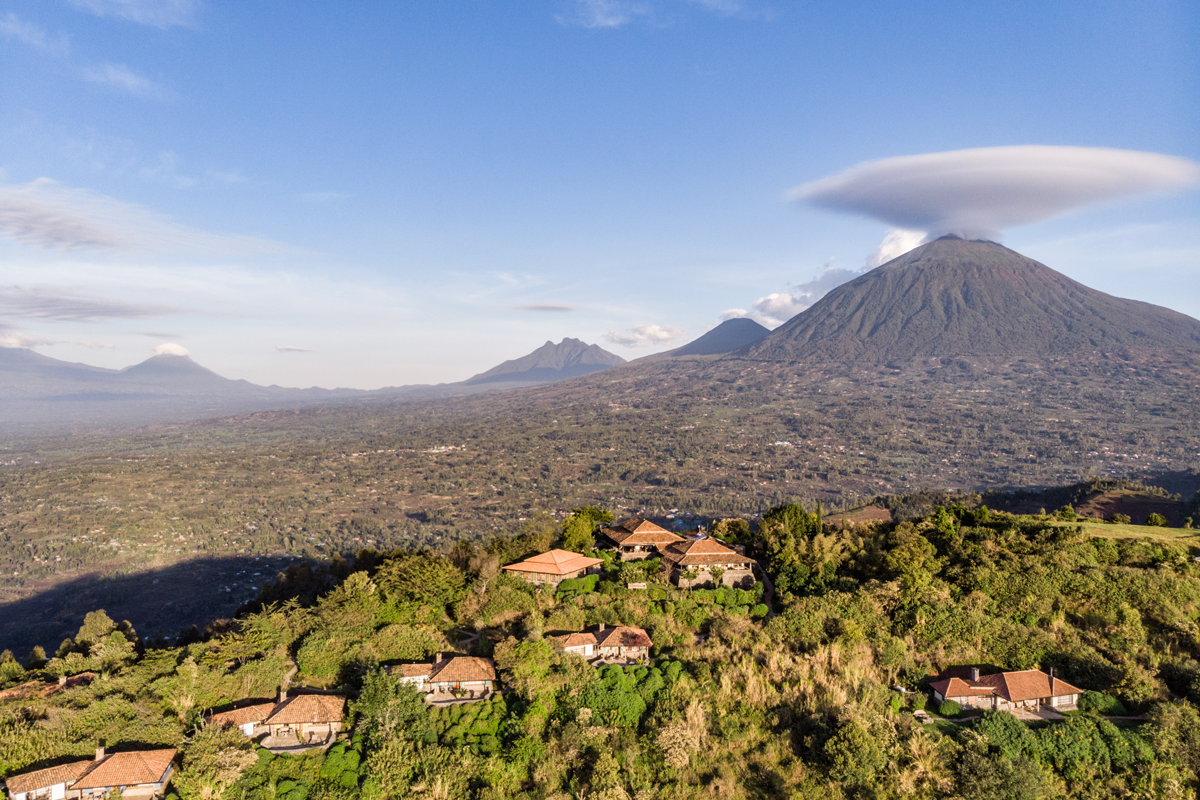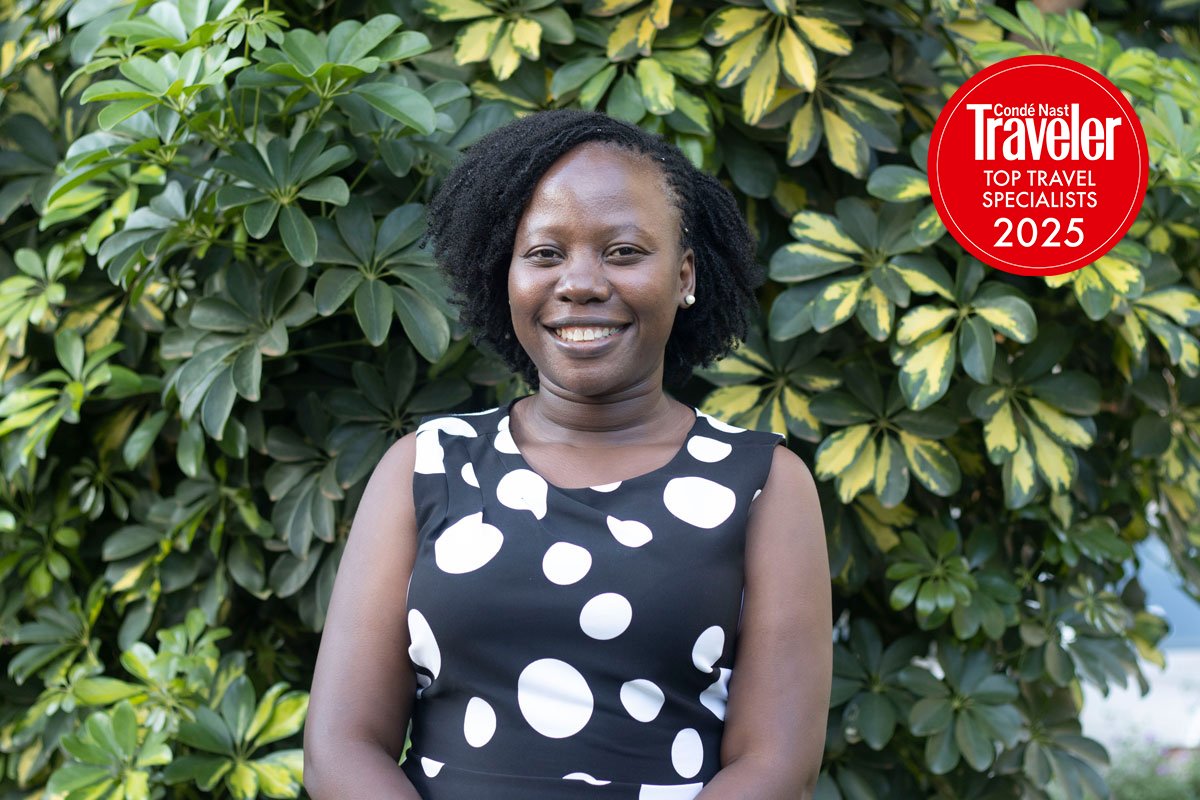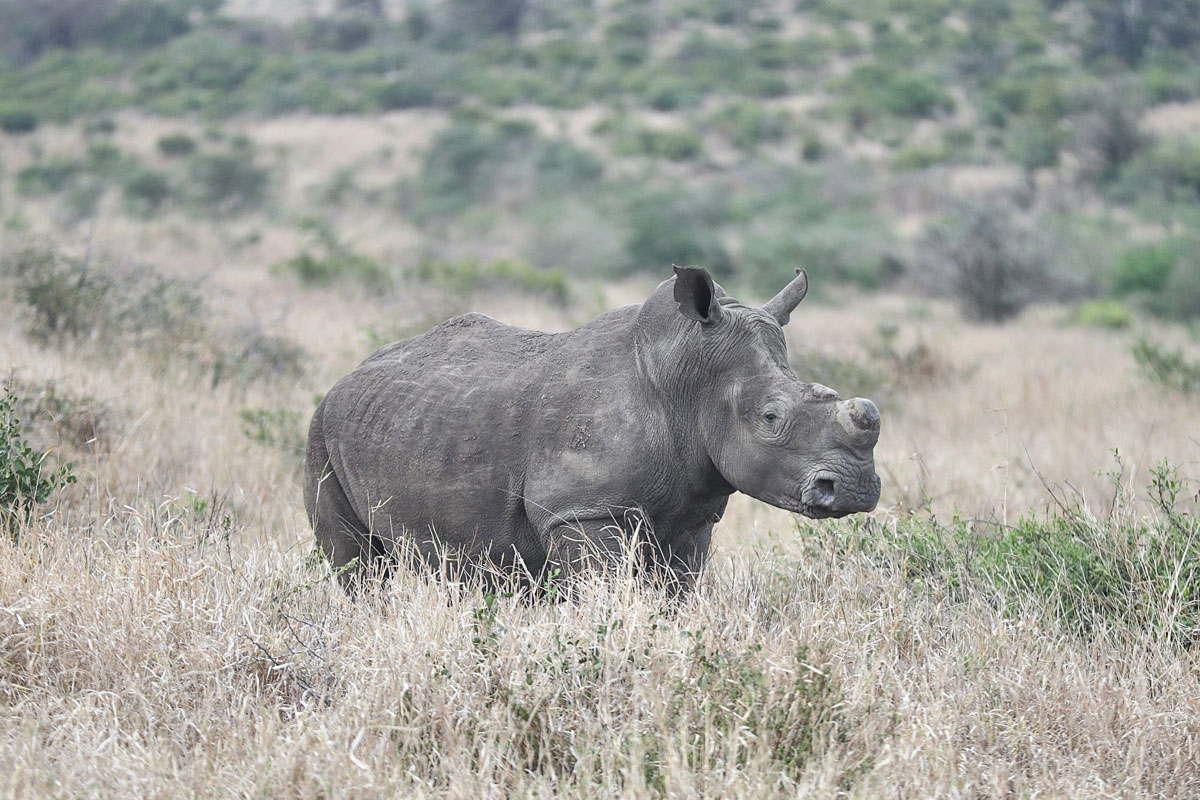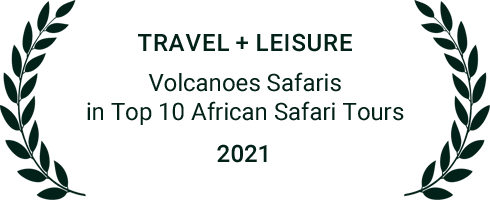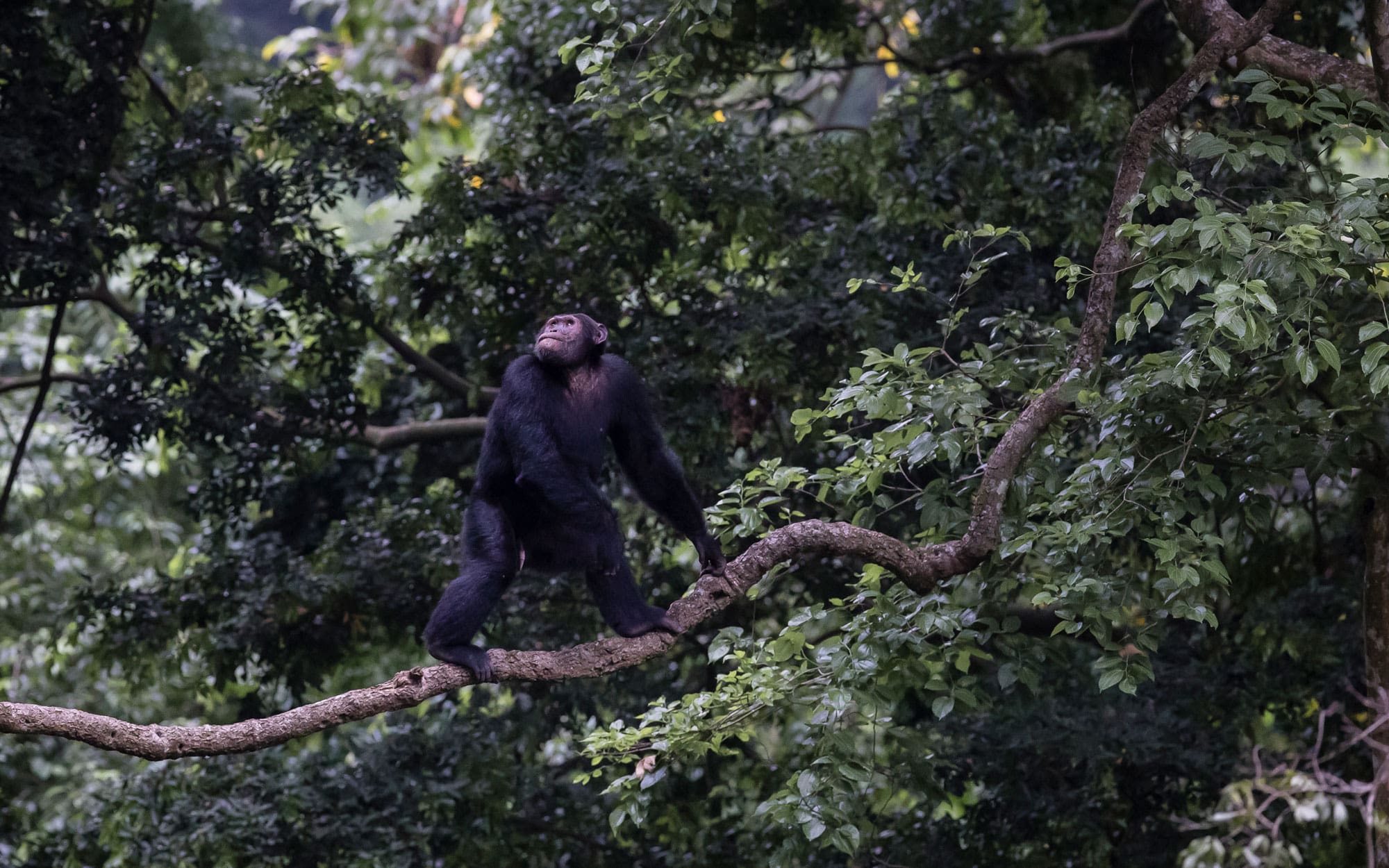Bwindi Impenetrable Forest, which lies wholly in Uganda and is geographically separated from the Virunga Massif (which includes Volcanoes National Park in Rwanda, Mgahinga National Park in Uganda and Virunga National Park in DRC), is home to about 40% of the world’s remaining wild mountain gorillas. As I discovered on my first treks in the park 2011, Bwindi and its gorillas are distinct from the more famous Virunga Massif and its gorillas.
While high-elevation Virunga has volcanoes up to 4,507 meters (14,787 feet) high, meaning most treks involve a challenging hike up followed by a descent to the bottom, Bwindi has undulating waves of hills up to 2,607 meters (8,553 ft) high with deep ravines dropping down to 1,190 meters (3,900 feet). In other words, in Bwindi you’re in for some seriously steep up and down hiking. Despite the challenging terrain, this “Impenetrable Forest” is lush and beautiful with more 1,000 species of flowering plants and 163 tree species.
Because of the preponderance of fruit-bearing trees, Bwindi’s gorillas tend to spend a lot of time off the ground, foraging and even nesting in the trees. Perhaps to adapt to life in the trees, the gorillas here are a bit smaller and lighter than their counterparts in the Virunga Massif. They also have smoother faces and slightly thinner hair.
Currently, tourists in Bwindi can visit nine different groups. I chose to visit Nkuringo group, one of the most popular and well-habituated families in the park, and one I hadn’t seen before.
Our hike started in typical Bwindi fashion, with a steep hike straight down a ravine where, miraculously, farmers were to be growing a bumper crop of sweet potatoes and bananas. On the other hand, the thorny bushes planted to keep gorillas away didn’t seem to be doing so well. A six-year-old boy with a broad smile proudly told us he’d seen the gorillas at the bottom of the ravine, where the farmland meets the park’s buffer zone.
Dr. Fred explained that Nkuringo group, which is so comfortable around people, spends most of its time in this buffer zone, occasionally coming onto farmland. The food they like to eat grows more densely in open areas than in the forest. This fact makes it easier for tourists to get great photographs of the group, although the gorillas are more at risk for getting into trouble raiding farmers’ crops.
After about an hour we bottomed out and the Ugandan Wildlife Authority trackers with us started looking for signs of where the gorillas might have moved since the morning. The sound of chest beating to our right made the job easy.
First we saw Kirungi, the third silverback in the group, basking in a patch of pink and white impatiens. I should have been taking photos for Gorilla Doctors but for this last visit I was more interested watching the gorillas with my own eyes. It was amazing how close this gorilla seemed without my camera in front of my face—and so calm and totally unbothered by my presence!
After Kirungi wandered off we found Kwitonda and her infant in a tree, both stuffing themselves with leaves as if they’d never tasted anything so good before. To my right, a jumble of impatiens parted and Rafiki, the second silverback in the group, came marching by with a cluster of juveniles and females.
The silverbacks of Nkuringo are notorious for fighting with each other for control of the group and the females, but on this day, dominant silverback Safari seemed not to care about who was fraternizing with who. He was off by himself in a shady area, pulling vines with purple flowers through his teeth, the leaves and flowers popping off into his mouth like meat off a kebab skewer. Out in the distance in a farmer’s field, the fourth and lowest ranking silverback, Karibu, nibbled on some plants while watching a group of tourists who were making their way to Nkuringo slowly navigate down the steep ravine.
As the tourists approached, I took some final photos and stayed in place as the gorillas crossed a stream and headed for higher ground. Even as Dr. Fred and I climbed high up the ravine to return to our car, the gorillas were still sight, showing off for the tourists. I wondered if this would be my last sight of mountain gorillas.
Somehow I know I’ll be back some day to see them again. While the gorillas are critically endangered, I feel confident in the conservation organizations working to protect them and in the tour companies, like Volcanoes Safaris, that bring in the tourists whose gorilla permit fees fund the National Parks. In the meantime, I hope you’ll say hello to the gorillas for me if you see them.
Molly
